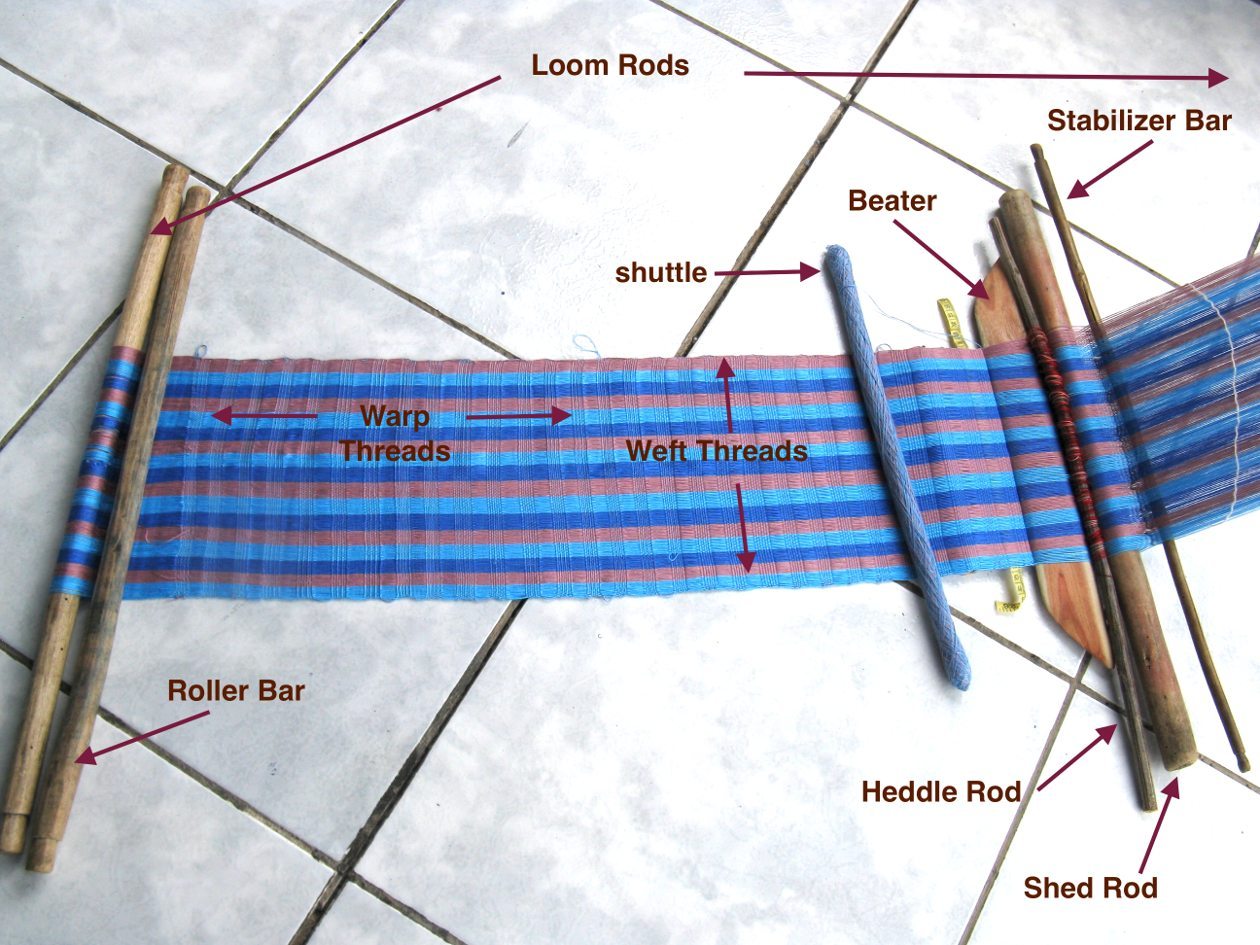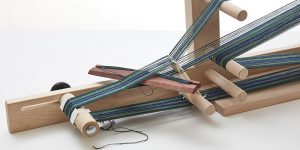Looms
How it works
- Fabric is woven in right angles: lengthwise (warp) threads are tightly tied from a back beam to front beam and weft threads are woven perpendicularly through them.
- Warps are lifted and lowered to form opening (shed)
- A large needle (shuttle) helps weave wefts through
-
Types:
- Backstrap Loom
- Simple loom that has existed since ancient times
- Warps are tied from a solid object to the person weaving (ie “backstrap”)
- The person weaving can control how tight the warp yarns are by leaning back

- https://mayaweavings.com/pages/what-is-backstrap-weaving
- Tapestry Looms / Frame Loom
- Simple loom that cannot make a shed
- Restricted to size of frame

- https://textilechapter.blogspot.com/2016/11/frame-loom-weaving-definition-features-advantages-disadvantages.html
- Inkle Loom
- Great for beginners
- Makes narrow strips such as a belt
- Portable and cheapest (as low as $99)

- https://www.interweave.com/article/weaving/learning-to-weave-on-an-inkle-loom/
- Rigid Heddle Loom
- Great for beginners
- One rigid heddle (warp yarns are threaded to these so you can lift and lower them)
- Best way to create pattern

- https://woolery.com/weaving-looms/looms-by-types/rigid-heddle-looms.html
- Jacquard Loom
- Lets you control individual warp yarns
- Originally used a chain of punch cards to instruct a loom to make intricate patterns

- https://woolery.com/weaving-looms/looms-by-types/rigid-heddle-looms.html
- Backstrap Loom
When to use
- Weaving materials together to make a cloth or tapestry
- Usually want to make a larger cloth
Where to Find
- Carnegie Mellon Textiles Lab (Wean 1334)
- Prosumer-level Jacquard Loom
- Jacquard looms selectively raise and lower every warp yard
- Contact Jim McCann (jmccann@cs.cmu.edu)
- Prosumer-level Jacquard Loom